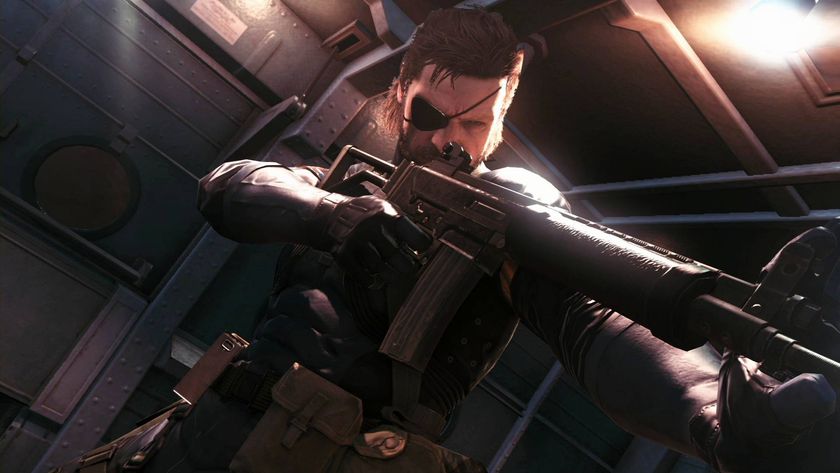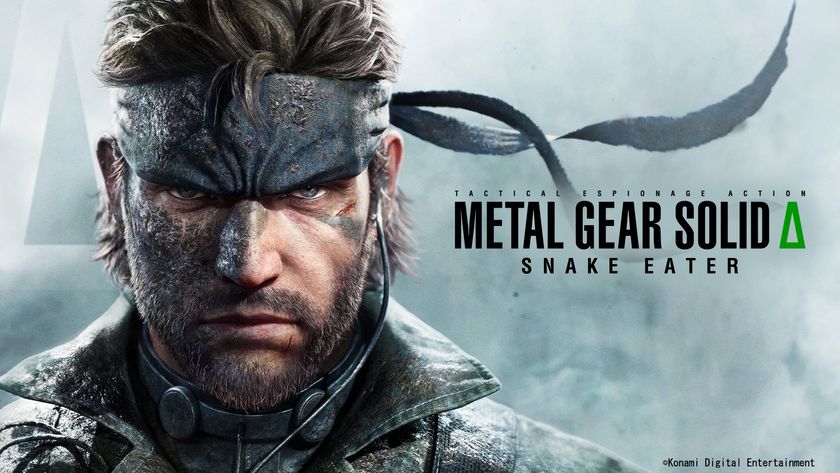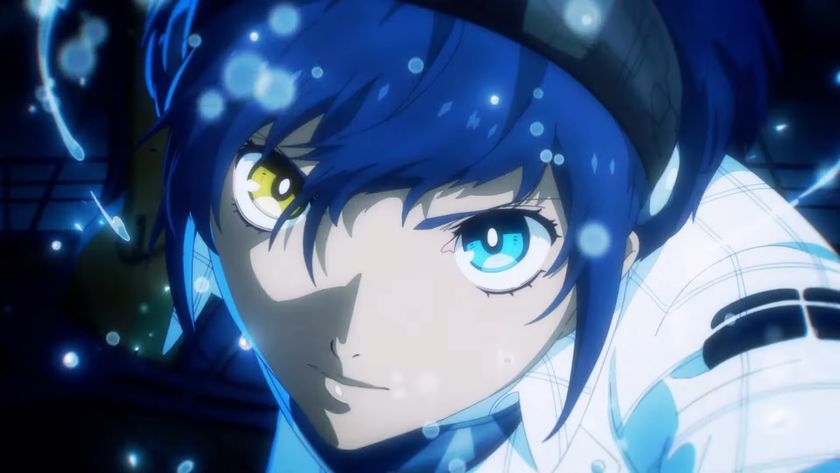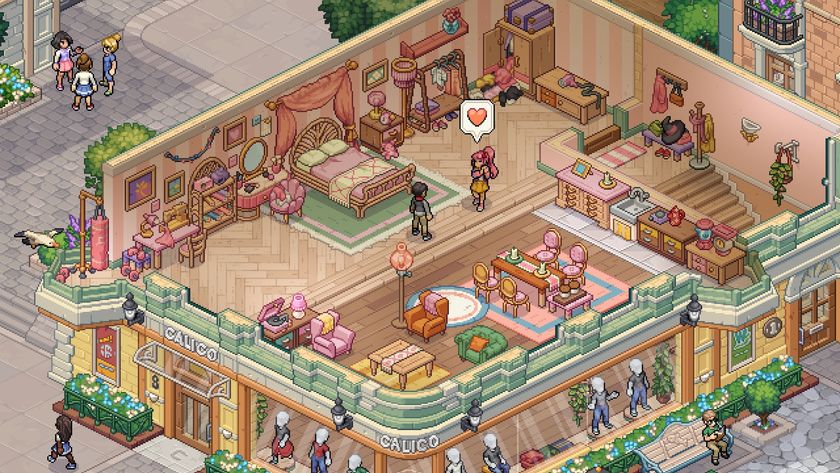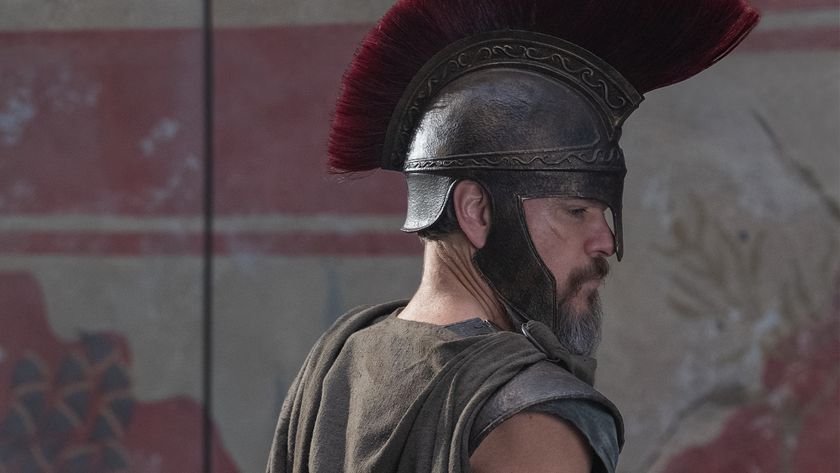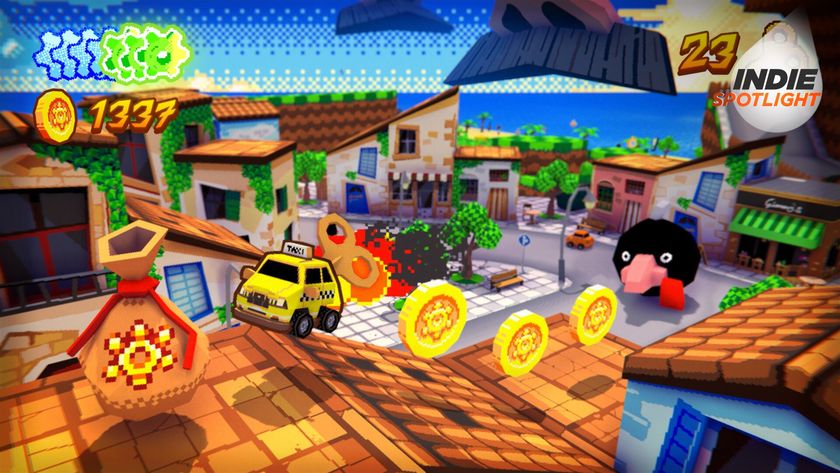Revengeance - 8 crucial facts about the Metal Gear universe
Here's what you need to know before jumping sword-first into Revengeance
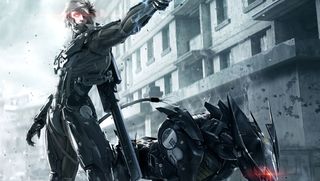
War has changed, etc
The Metal Gear Solid franchise, while renowned for its political drama and slick spy action, isn't exactly easy to digest. Its fiction is often convoluted, rife with so many conspiracies and coups that it's impossible to follow without consulting the pages of Wikipedia. Thankfully, Metal Gear Rising: Revengeance (which we recently reviewed) has a story that's a bit easier to understand.
The thing is, there are plenty of references to the events of Metal Gear Solid 4--so if you're unfamiliar with that particular entry (or are in need of a refresher in general), you might be a bit confused. Who / what are The Patriots, again? Why is Raiden a cyborg? And what's this SOP thing the characters in Revengeance off-handedly mention so frequently? We're here to help.
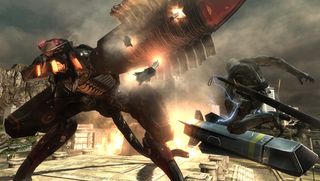
A Metal Gear is an all-terrain bipedal mech capable of deploying nukes from anywhere
This is basic Metal Gear knowledge, but we feel it's worth mentioning what, exactly, makes a Metal Gear a Metal Gear--you know, just in case you forgot (or are unfamiliar with) what the things actually are. In their most basic form, Metal Gears are walking weapons of mass destruction. The original prototypes, as well as the heavily armored Rex variant introduced in Metal Gear Solid, had the capability to launch nuclear missiles from basically anywhere on the planet. Later versions, like MGS2's agile Ray, lacked nuclear capabilities, but were deadly nonetheless.
In any case, Metal Gears are giant, walking tanks, and they're bad news. Though they don't play a pivotal role in Revengeance's story, you will have to put down a Ray or two with your blade.

The Patriots used to pull the strings from the shadows and created a war-based economy
The Patriots, a shadow organization that secretly controlled the United States of America, is a rather complex and integral part of the Metal Gear universe, though the cabal's origins are a bit beyond the scope of what you need to know to understand its relevance to Revengeance. Suffice it to say its members believed that the world should be unified via behind-the-scenes control.
The living members of The Patriots were eventually replaced with AIs, whose purpose was to filter and control the distribution of digital information to the benefit of the group's ideologies. Which they did, creating the unforeseen side effect of producing a world economy reliant almost exclusively on war (good luck finding an explanation for this within the convoluted folds of Metal Gear Solid's fiction!). As a result, private military companies began cropping up all over the world.
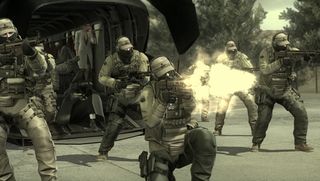
Private military companies (PMCs) are all the rage
We saw the result of the war-driven economy in Metal Gear Solid 4. Competing PMCs engaged in meaningless proxy wars to increase their reputation to obtain more military contracts, further driving the profits of weapons manufacturers and, by extension, the economy as a whole. The battlefield effectiveness of PMC soldiers increased substantially once troops began injecting themselves with ability- and sensory-enhancing nanomachines.
Unbeknownst to them, however, the AI cores that composed The Patriots used those nanomachines to develop a monitoring and control network called Sons of the Patriots, or SOP for short. These robotic steroids had a rather nasty side effect...
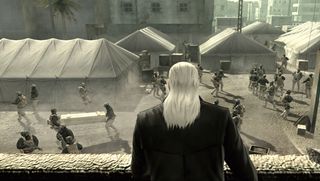
Snake put an end to The Patriots and SOP
While SOP served to make soldiers more efficient on the battlefield, it also left them susceptible to hijacking by the likes of Liquid Ocelot, who had intended to assume complete control over the world's military forces by using the AI cores that composed The Patriots to command nanomachine infused troops. By doing so, he would've created the ultimate army, who, thanks to said nanomachines, would be unable to resist his commands.
The bigger thing to take away, though, is that SOP and The Patriots (as well as Liquid) were ultimately shut down by Snake at the end of Metal Gear Solid 4, meaning PMCs had to rely on new technology to replace their now-defunct nanomachines. After all, having an advantage over your competitors means higher profits.
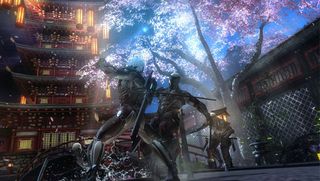
Cyborgs became the substitute for nanomachines
As it turns out, Snake's triumph had little effect on the economy, which remained driven primarily by warfare. After the fall of SOP, PMCs began seeking new ways of gaining a competitive edge on the battlefield. Fast forward four years into the future, when Revengeance takes place, and they've become reliant on cyborg technology in the stead of nanomachines.
Like SOP, these robotic enhancements increased soldiers' awareness and combat capabilities, making them extremely deadly in action. The rampant use of cyborg tech also spawned numerous high profile ninja-like soldiers, whose super speed, strength, and defensive capabilities have basically rendered bullets harmless.

Before Raiden was an awesome cyborg ninja, he was a feared child soldier
Revengeance is rife with plenty of references to Raiden's plast, so it's important that you be caught up on how he grew up. Long before he began slicing up bad guys as a sword-wielding cyborg, Raiden (whose real name is Jack) was slicing up his own countrymen with a small blade as a child.
He was born in Liberia in the early 1980s, adopted by Solidus Snake (who is referred to in Revengeance as "Ol' Georgie Boy"), and raised as a child soldier. He then went on to systematically murder dozens of people during the Liberian Civil War in the late '80s, early '90s, earning a reputation as a feared killer and earning the nickname "Jack the Ripper."
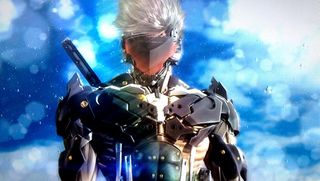
Raiden was captured by the Patriots and used as a test subject for exoskeleton enhancement
Jack eventually escaped that horrible life of war, repressed his memories, and relocated to the United States to join the military. After the events of Metal Gear Solid 2, and with all his childhood memories recovered, Jack was captured by hostile forces during an attempt to steal Big Boss' remains from The Patriots. This was how Raiden was unwillingly transformed into a cyborg ninja, a painful process in which his captors removed his head and spine from his human body and transplanted it into a synthetic one (for testing purposes). Unfortunately for them, he escaped.
As we mentioned earlier, a cyborg body has its benefits, including enhanced speed, strength, and pain tolerance, all of which play a large role in Revengeance's combat. A cyborg body also has its downsides. Rose, Jack's love interest (with whom he had a child), kind of didn't want to date a mostly-robot dude.
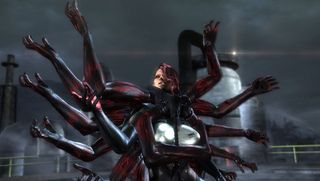
Raiden joins a PMC and makes some new enemies
At the onset of Revengeance, Raiden joins a PMC named Maverick Security Consulting. While other PMCs sell contracts to the highest bidders (regardless of morality or consequences), Maverick focuses exclusively on providing conflict deterrence via security. As such, one of Maverick's biggest jobs is to help rebuild a war-torn African country.
It's during this job that Raiden encounters the highly skilled leaders of a rival PMC, Desperado Enforcement, whose goal is to spark war once more within the country's borders. Only by mastering Raiden's abilities can you put an end to Desperado's forces, and you'll need every ounce of strength you can muster if you hope to do so successfully.
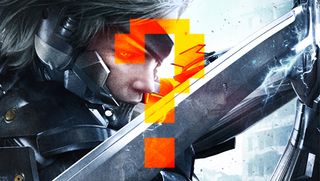
Get ready for revenge. And vengeance. REVENGEANCE
Revengeance's references to previous Metal Gear games don't occur that frequently, but you'll be glad you know the context for them when they come up. This isn't a comprehensive breakdown of the entire universe, but this list should get you caught up on the things you need to know about before playing Revengeance. Are you excited to play it? And if you already have, what did you think? Let us know in the comment below.
For more check out our Metal Gear Rising: Revengeance review, or our list of best Metal Gear Solid games.

Ryan was once the Executive Editor of GamesRadar, before moving into the world of games development. He worked as a Brand Manager at EA, and then at Bethesda Softworks, before moving to 2K. He briefly went back to EA and is now the Director of Global Marketing Strategy at 2K.
